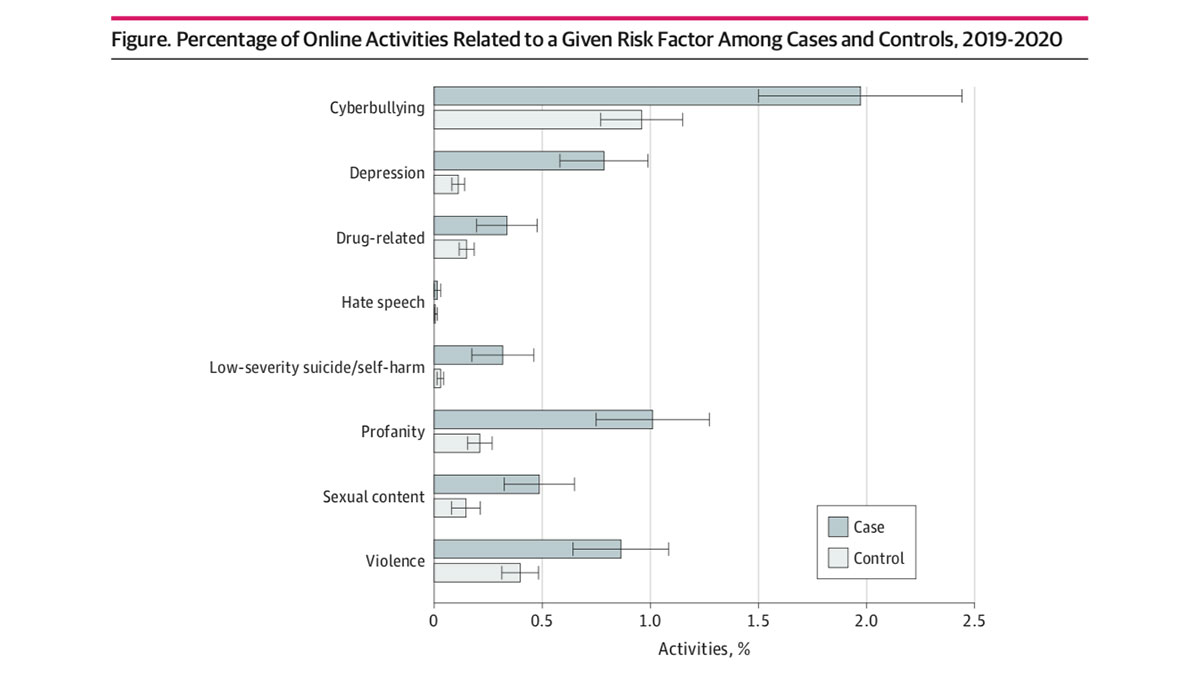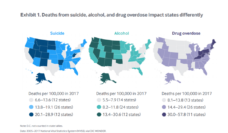Suicide is the second leading cause of death for children and adolescents in the U.S. In 2019, 18.8% of students reported having seriously considered suicide. Between 2001 and 2018, the number of self-harm emergency department visits increased 88.6% among youth ages 10 to 18.
There is a notable relationship between online communication and suicidality among youth. However, most suicide risk studies have been limited by their reliance on self-reported data about screen time. Steven Sumner and team from the CDC set out to fill this gap in the research by analyzing real-time online activity using an online safety tool called Bark, which tracks online content on school electronic devices loaned to students, like online text, images, and video usage. If Bark finds content that indicates potential self-harm, it sends a severe suicide/self-harm alert to schools and parents (considered “cases”).
Demonstrated by the Figure, eight suicide risk factors were tracked and all (except for hate speech) were significantly associated with generating suicide/self-harm alerts. Students who searched for or sought online material related to depression, profanity, and sexual content more likely to generate severe suicide/self-harm alerts. Furthermore, youth who engaged with multiple risky topics had an exponentially higher risk of severe suicide/self-harm alerts. For instance, students with 5 or more online risk factors had 70 times higher odds of activating a severe suicide/self-harm alert.
The authors note that some online risk factors may affect other risk factors. Take for example cyberbullying, which had the highest percentage for cases. Although cyberbullying may lead to a suicide attempt, most of the consequences of cyberbullying may be attributed to increasing depression over time.
Online technology was meant for connectedness, but it can also promote feelings of isolation. By identifying specific online risk factors, schools can form more targeted suicide prevention measures.
Databyte via Sumner SA, Ferguson B, Bason B, et al. Association of Online Risk Factors With Subsequent Youth Suicide-Related Behaviors in the US. JAMA Network Open. 2021.














